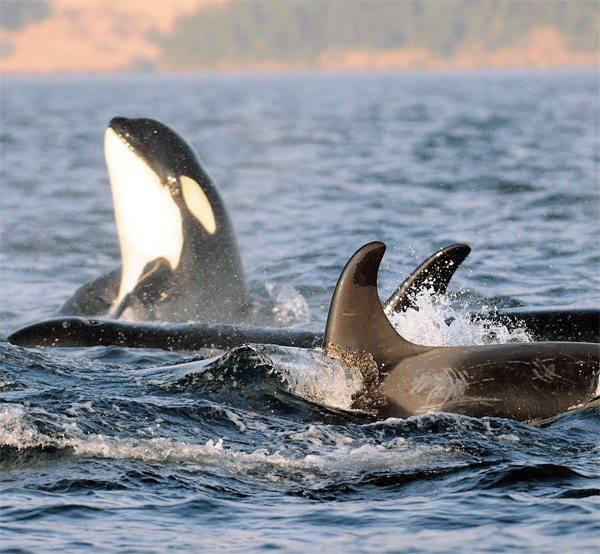Hoping to improve orca populations around Whidbey Island and throughout Puget Sound, federal regulators have added a few more teeth behind the bite of rules designed to protect killer whales from a sometimes-too-curious public.
Beginning May 14, recreational and commercial whale watchers will be required by law to maintain a 200-yard buffer around all orcas. Operators will also be prohibited from intercepting or placing their vessels in the paths of oncoming whales.
The new rules will apply to all marine traffic, including kayakers. The only exceptions are vessels engaged in commercial fishing, cargo ships traveling in established shipping lanes, and government and research vessels.
“The idea is to try and influence whale behavior as little as possible,” said Brian Gorman, a spokesman for the National Oceanic and Atmospheric Association.
The federal agency, commonly known as NOAA, has been working on the rules for the past two years. They will replace what is currently just a guideline for a 100-yard buffer.
The close proximity and underwater noise generated by boats is believed to have a negative effect on the natural sonar orcas use to navigate and find food. It’s one of three problems, including a shortage of chinook salmon and water pollution, NOAA officials attribute to a decline in orca populations.
The new rules are specifically geared around the protection and rehabilitation of the Eastern North Pacific Southern Resident killer whales, a distinct group of orcas the federal agency placed on the endangered species list in 2005.
“These guys are not in the best of shape,” Gorman said.
According to a NOAA news release, the Southern Resident population peaked at 97 animals in the 1990s, and then declined to 79 in 2001. While numbers have increased to an estimated 86 individuals, only half of which are sexually mature, Gorman said the hope is that the new rules will help the population grow up to 200.
The range of Southern Residents is believed to span as far south as Monterey, Calif., to as far north as the Queen Charlotte Islands archipelago, now officially known as Haida Gwaii, off the north coast of British Columbia.
But while most whale advocacy groups support the new rules, some say NOAA’s new policies address the lesser of the known problems. Howard Garrett, president and co-founder of the Greenbank-based Orca Network, said the science linking declining orca populations to marine engine noise is “fairly thin.”
“It’s basically theoretical,” Garrett said.
That’s not the case with healthy chinook salmon populations, however, which make up the bulk of Southern Residents’ diet. Nor is it the case with water quality, which is heavily dependent on development policies as they can affect watersheds and estuaries essential to the health of salmon populations.
“Those numbers are solid,” Garrett said.
Both problems should be a much higher priority than the proximity of recreational or commercial tour boats, Garrett said.
While the new rules certainly won’t harm orca recovery, they may not do all that much good either.
“I don’t think the regulations will help whales a lot,” Garrett said.



